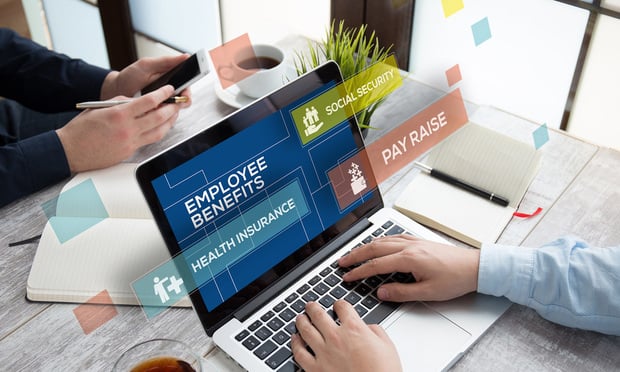 By assessing employee health care data, AI driven platforms can recalibrate the menu of offered packages to reflect predictive usage. (Image: Shutterstock)
By assessing employee health care data, AI driven platforms can recalibrate the menu of offered packages to reflect predictive usage. (Image: Shutterstock)
Head People Officer, Chief Happiness Officer, Chief Human Capital Officer… these are all creative titles for one of the most important positions in corporate life: the HR manager. The proliferation and creativity of these positions signifies the key responsibilities of the role: the care and management of a company's employees, its most important asset.
In addition to making sure that employees feel recognized and appreciated, it's the HR manager's responsibility to ensure that workplace benefits speak to employee needs. After all, workplace health benefits are widely considered one of the most important employee motivators. Knowing that, therefore, the burden of determining the right selection of benefits can be especially onerous. But help is on the way. Tools that use artificial intelligence (AI) can provide real relief to HR managers–and employees–with predictive intelligence to determine the right package of benefits to meet key criteria.
Here are three ways AI can actually help:
1. Plan selection for employees
Benefits selection has become complex and choosing a health coverage plan can be overwhelming. Employees need to weigh how their lifestyles and specific requirements translate into actual offerings. But because it's often hard to anticipate health problems, not to mention discern the differences between plans, many people wind up with plans that are not ideally suited to them or to their families.
Related: Lack of benefits understanding brings low morale, high turnover
AI can help. By describing your lifestyle, income status, risk tolerance and recurring medical expenses, those criteria are cross-referenced against historical outcomes providing employees with a pool of optimal plans.
2. Predictive care
What if it were possible to use “precognition” to detect crimes before they happen — remember the film “Minority Report?” By accumulating a large mass of claims data and understanding population-level health dynamics over time, we can use what is essentially “precognition” to identify future clusters of particular diseases.
This futuristic capability will help insurance carriers create better plans to suit their customers. But the data should not only be in the hands of the providers. Having predictive health data at employees' fingertips will allow them to make smarter decisions based on health conditions you may be predisposed to and possibly opting out of the cheapest, baseline plan. The buyer should make these decisions based on his or her own risk factors.
3. Plan selection for employers
One reason the job of HR manager is particularly stressful is that the health of company employees — and in turn their families — rests on their shoulders. Employees must trust their HR person to select and offer the right basket of health benefits to protect them.
All of the disclaimers in the world don't alleviate the enormous stress that goes with the risk of making the wrong decision. Technology should ease this process. By assessing employee health care data, AI driven platforms can recalibrate the menu of offered packages to reflect predictive usage. Think of it as Netflix, which uses its troves of viewing data to commission and recommend the right shows for subscribers.
Uniformity of plans
This, ironically, is hard to predict, but one interesting consequence of AI-driven health benefits may be the commoditization of plans overall.
As AI gives carriers greater insight into which products employees are choosing and using, each will begin to want what the other has, Carriers could begin to match each other, lining up behind the most successful packages.
We could see more plans offered more often—or a standardization of this burgeoning array of plans into a single wrapper plan which accommodates all those nuances.
The future outlook
Generally speaking, we all struggle with making complex benefits decisions. But, just as we entrust doctors who have a long-term understanding of our medical history, allowing artificial intelligence to crunch employee-level and large-scale data points can lead to a vastly improved consensus of what constitutes the best coverage plan.
This won't happen over night, but if companies planned accordingly and were open to feedback to support these changes, we can usher in a more effective, less stressful coverage regime for both employees and their HR managers.
Rachel Lyubovitzky is the CEO and co-founder of EverythingBenefits.
Read more:
© Touchpoint Markets, All Rights Reserved. Request academic re-use from www.copyright.com. All other uses, submit a request to [email protected]. For more inforrmation visit Asset & Logo Licensing.






